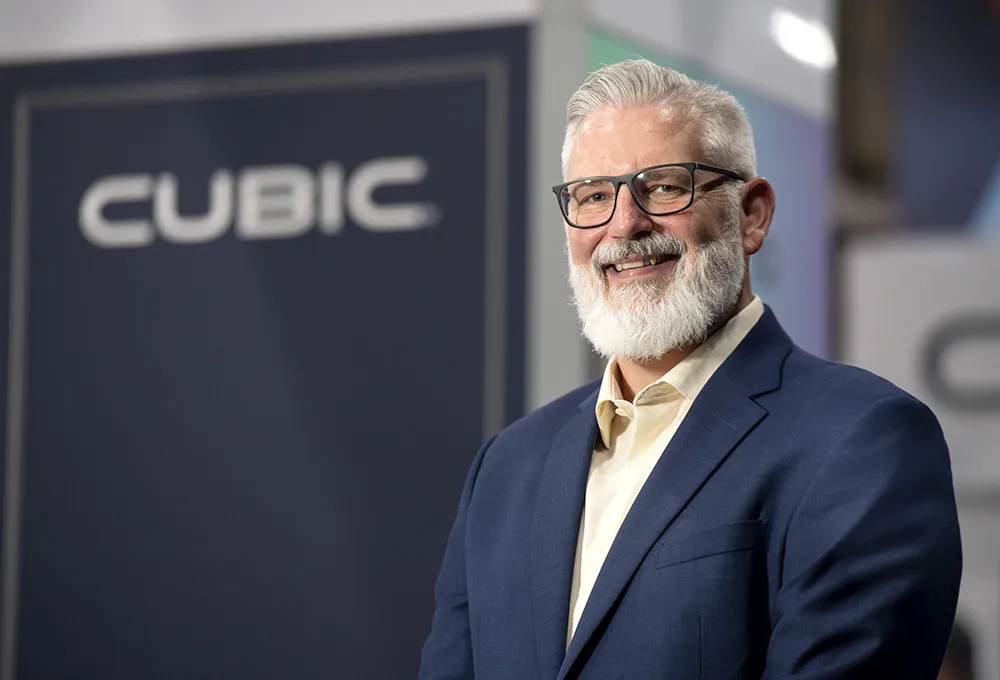For a long time, the ITS industry agonised over how to make itself better known to the public. There were pragmatic reasons for this – greater awareness of what it is and does leads to greater lobbying power, an important consideration for a small industry pitched against the might of the road-building fraternity in the fight for budgets – but there was also an element, it must be said, of just wanting to be ‘loved’. But that desire runs up against several realities. The first is that even ‘experts’ strugg
April 11, 2013
Read time: 4 mins

For a long time, the ITS industry agonised over how to make itself better known to the public. There were pragmatic reasons for this – greater awareness of what it is and does leads to greater lobbying power, an important consideration for a small industry pitched against the might of the road-building fraternity in the fight for budgets – but there was also an element, it must be said, of just wanting to be ‘loved’. But that desire runs up against several realities.
The first is that even ‘experts’ struggle to define what ITS is. Indeed, on any given day it can be one or several different things according to application. Also, the technologies are often shared with other, non-transport applications – taken across the ITS sector as a whole, surprisingly few solutions can be held to be wholly unique.
Another is that people simply aren’t interested. Traffic management is like refuse or waste water management – the masses don’t care how it happens, just so long as it does.
Go find yourself a marketing agency willing to take on that product. It’ll have to be one of the better ones, and it’ll charge you a pretty sum for taking on the task.
Salvation of sorts has come from without, rather than within. ‘Without’ in so many ways, in that the devices delivering ‘ITS’ – smart devices – are from an industry (consumer electronics) which doesn’t consider itself a part of ITS.
To the public, ITS was always going to be about the brand in the hand, not a bunch of disparate systems struggling to co-exist under some amorphous acronym. That’s no bad thing, as anonymity confers an ability to just quietly get on and do things. It means that systems can be developed and improved without undue public scrutiny. That doesn’t mean we should husband or accept failure or mediocrity – no, it means that solutions and applications can be developed in the fullness of time to the fullest of their potential.
The aim should be to complement, rather than control. The consumer electronics industry is massive – the ITS industry cannot ever hope to subsume it. Moreover, many of the applications which smart devices host can exist entirely independently of ITS. The smart devices themselves are both the data source and the delivery means.
But are we setting ourselves for a bit of a fall?
I’m happy to see much of what we do migrate to or be hosted on smart phones, tablets and the like. I actually think that in many cases that should be positively encouraged. 4G telecommunications and whatever follows thereafter will break down many of the wired/wireless assumptions and objections but they won’t do away entirely with a need for the ‘old’.
Far from it. Without data services to support it the bright, shiny, handheld ‘new’ is but an expensive – and empty – bauble. It cannot exist without the humble, near-invisible grey box at the roadside, the camera, loop or other detection system. Not yet, despite what many protagonists may claim.
So let’s get back to that fall. There’s a rush to embrace the new, I suspect at the expense of the old. Policy-makers and news-people like new. Old doesn’t provoke or inspire. It just does.
We need to keep an eye on anonymity. It doesn’t necessarily mean ineffective. Or superfluous. Make that mistake and we’ll undo all the good that the new has managed to do for us in such a very short time.
Jason Barnes, Technology Editor
The first is that even ‘experts’ struggle to define what ITS is. Indeed, on any given day it can be one or several different things according to application. Also, the technologies are often shared with other, non-transport applications – taken across the ITS sector as a whole, surprisingly few solutions can be held to be wholly unique.
Another is that people simply aren’t interested. Traffic management is like refuse or waste water management – the masses don’t care how it happens, just so long as it does.
Go find yourself a marketing agency willing to take on that product. It’ll have to be one of the better ones, and it’ll charge you a pretty sum for taking on the task.
Salvation of sorts has come from without, rather than within. ‘Without’ in so many ways, in that the devices delivering ‘ITS’ – smart devices – are from an industry (consumer electronics) which doesn’t consider itself a part of ITS.
To the public, ITS was always going to be about the brand in the hand, not a bunch of disparate systems struggling to co-exist under some amorphous acronym. That’s no bad thing, as anonymity confers an ability to just quietly get on and do things. It means that systems can be developed and improved without undue public scrutiny. That doesn’t mean we should husband or accept failure or mediocrity – no, it means that solutions and applications can be developed in the fullness of time to the fullest of their potential.
The aim should be to complement, rather than control. The consumer electronics industry is massive – the ITS industry cannot ever hope to subsume it. Moreover, many of the applications which smart devices host can exist entirely independently of ITS. The smart devices themselves are both the data source and the delivery means.
But are we setting ourselves for a bit of a fall?
I’m happy to see much of what we do migrate to or be hosted on smart phones, tablets and the like. I actually think that in many cases that should be positively encouraged. 4G telecommunications and whatever follows thereafter will break down many of the wired/wireless assumptions and objections but they won’t do away entirely with a need for the ‘old’.
Far from it. Without data services to support it the bright, shiny, handheld ‘new’ is but an expensive – and empty – bauble. It cannot exist without the humble, near-invisible grey box at the roadside, the camera, loop or other detection system. Not yet, despite what many protagonists may claim.
So let’s get back to that fall. There’s a rush to embrace the new, I suspect at the expense of the old. Policy-makers and news-people like new. Old doesn’t provoke or inspire. It just does.
We need to keep an eye on anonymity. It doesn’t necessarily mean ineffective. Or superfluous. Make that mistake and we’ll undo all the good that the new has managed to do for us in such a very short time.
Jason Barnes, Technology Editor










